© Ania Shrimpton
At the Dutch Lowlands festival there is plenty of focus on sustainable food and drink, but one initiative in particular is striking: Brasserie 2050. Here, the kitchen serves food for thought in a pop-up restaurant that can be completely disassembled and recycled. The menu boasts dishes of the future that will feed the ten billion people who will populate the planet in 2050. Take for example a hybrid steak tartare combining plant-based products with meat, or a hyper-local Niçoise salad.
Lowlands, the Netherlands
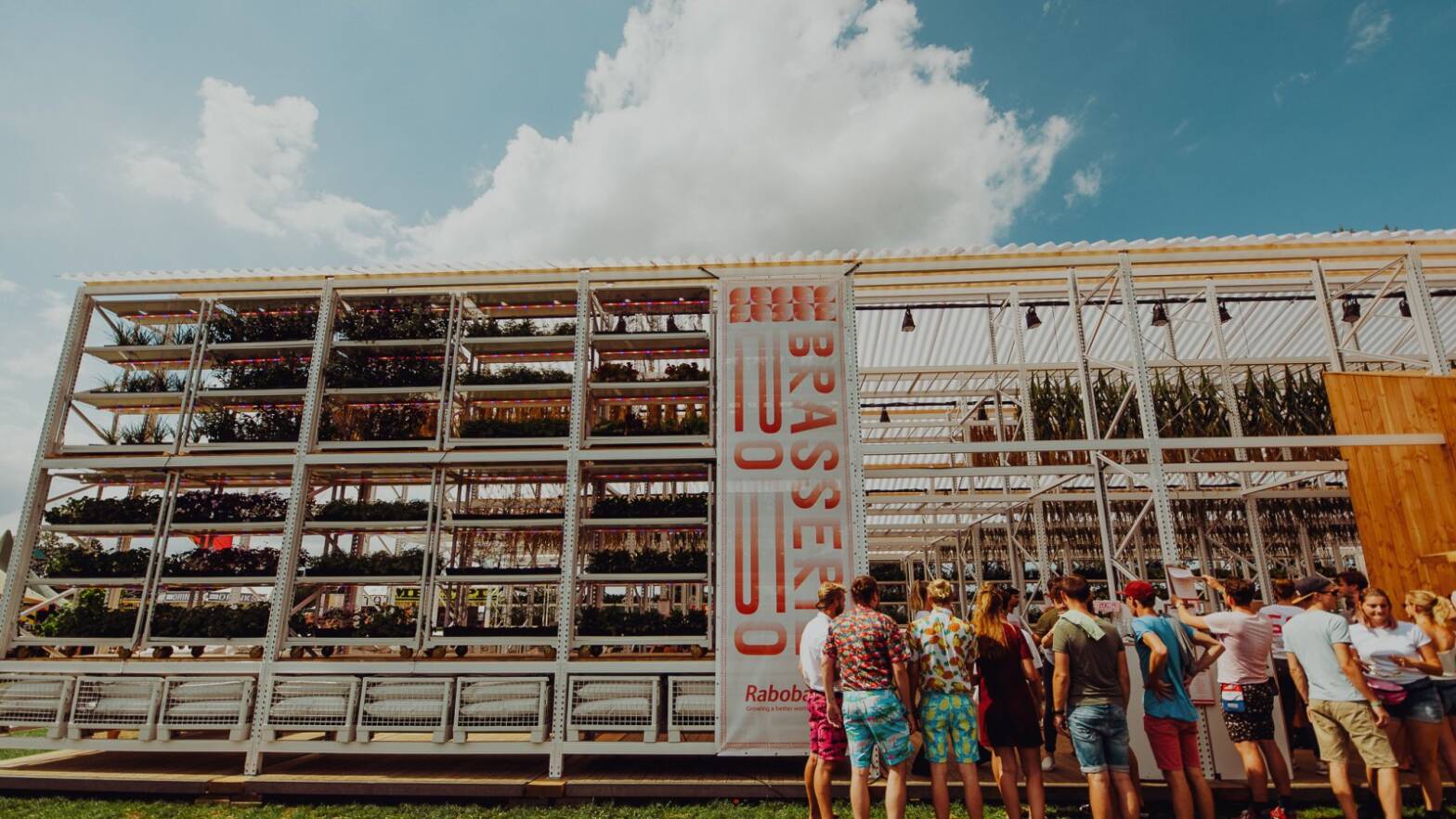
Tomorrowland, Belgium
The Tomorrowland dance event in Belgium is a kind of theme park for adults. After entering the gates, people feel transported to a dream world of dance, love & happiness. In 2017, before the vegan trend really took off, Tomorrowland was already experimenting with a purely plant-based range as part of their food line-up.
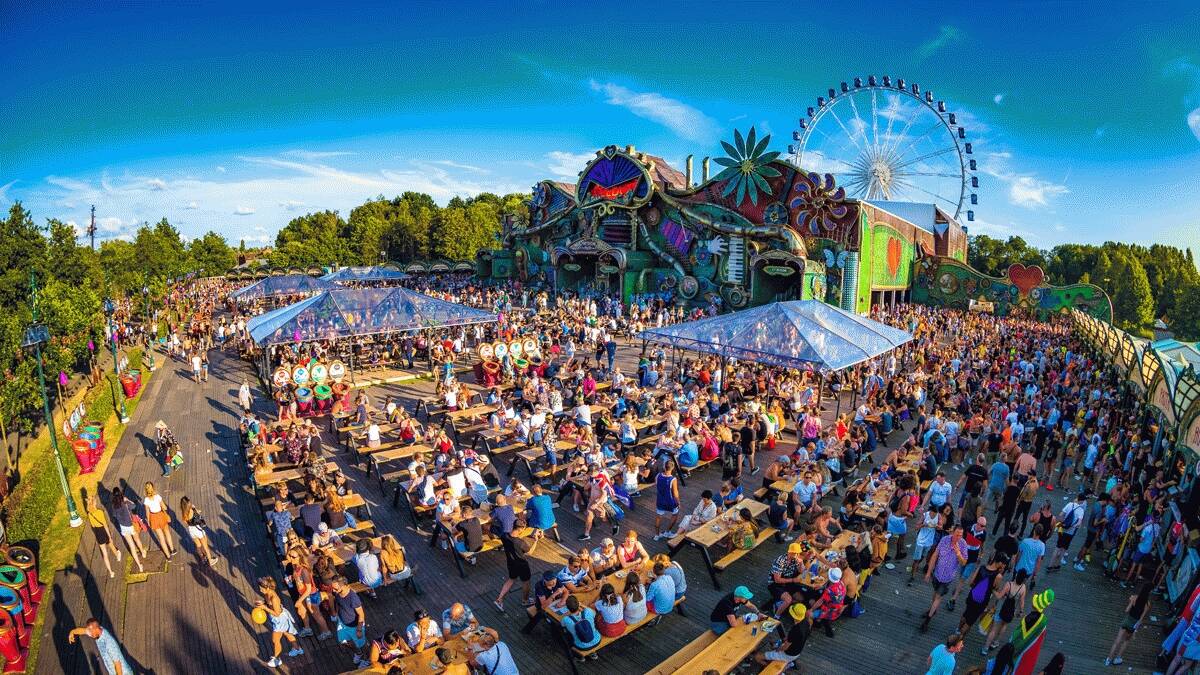
Shambala Festival, England
All the energy consumed at the Shambala Festival in England is sustainably generated. In 2016 the festival was already completely free of fish and meat. They also no longer sell plastic bottles; all their disposables are compostable and the organization even discourages visitors from wearing glitter. People attending Shambala also pay £10 recycling deposit. They get that money back if they hand in their recyclable waste at the end of the festival. In 2017, some 91% of the festival’s waste was either recycled, composted or transformed into energy.
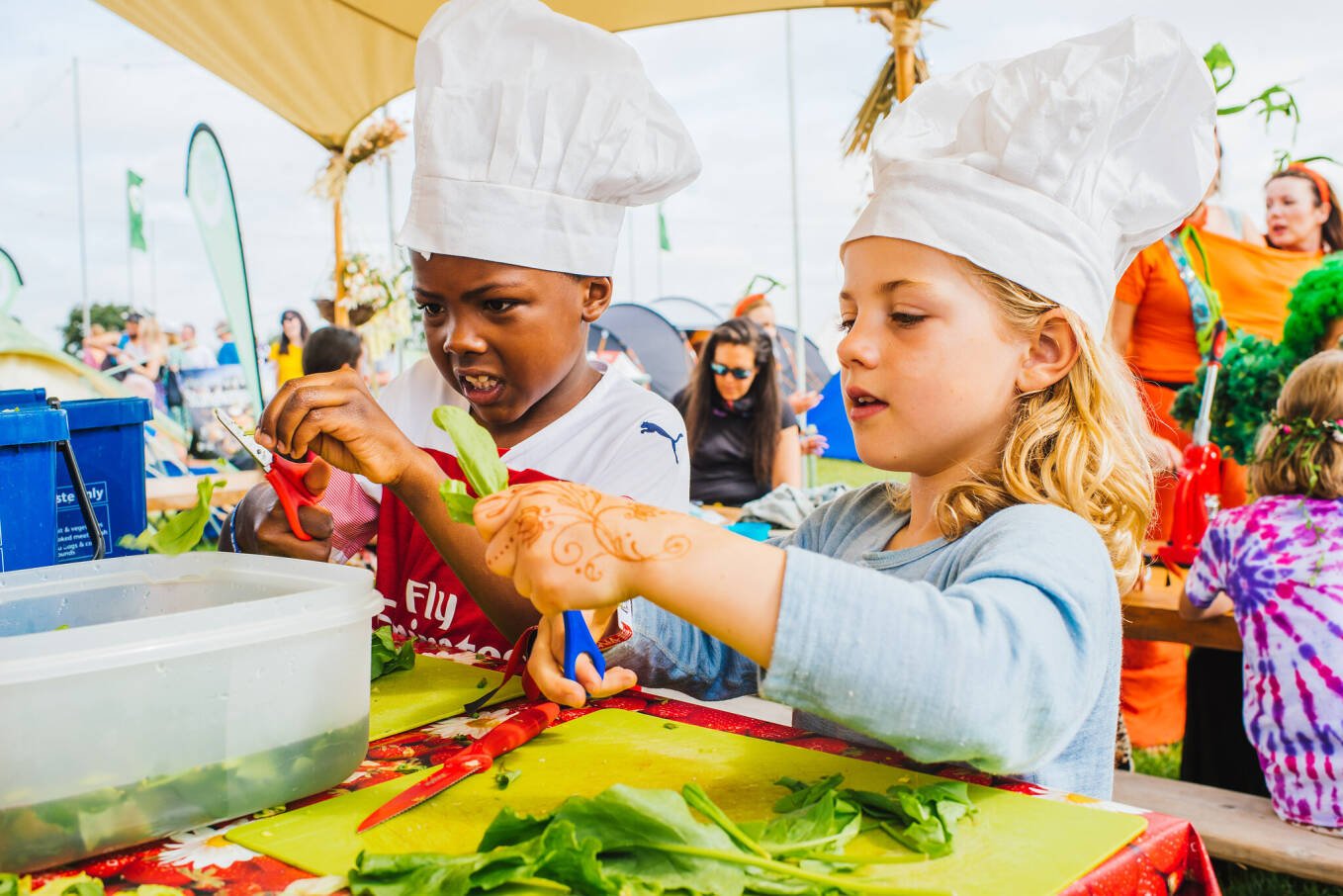
Envision, Costa Rica
The Envision festival in Costa Rica aims to become the most sustainable festival in the world. Water is available free of charge from faucets, and vegan food is the norm. At the Eco-hub, volunteers collect biodegradable waste, which is immediately sorted and processed. The DJs perform in booths made of living bamboo. As the organization puts it: we probably have the only festival stage in the world that is watered twice daily.
DGTL, worldwide
DGTL organizes festivals in multiple countries across several continents. Their mission: to organize festivals that are forward-thinking in terms of dance music, but at least as innovative when it comes to food, drink and waste management. The ways DGTL achieves this include the use of refundable hard cups, composting toilets, and by processing waste from local suppliers in the range of food available. Ultimately, DGTL isaiming to become a CO2- and waste-positive festival. In other words, a festival that leaves the world behind in better shape than when it started.
Joost Scholten Sander van der Meij
Festivals can create a lot of waste and there are never enough facilities. But that’s changed a lot in recent years. Some outdoor festivals are leading the way in circular innovation.
CIRCULAR FESTIVALS
Sustainable dancing

Inspiring initiatives
2 min
Shambala Festival, England
All the energy consumed at the Shambala Festival in England is sustainably generated. In 2016 the festival was already completely free of fish and meat. They also no longer sell plastic bottles; all their disposables are compostable and the organization even discourages visitors from wearing glitter. People attending Shambala also pay £10 recycling deposit. They get that money back if they hand in their recyclable waste at the end of the festival. In 2017, some 91% of the festival’s waste was either recycled, composted or transformed into energy.
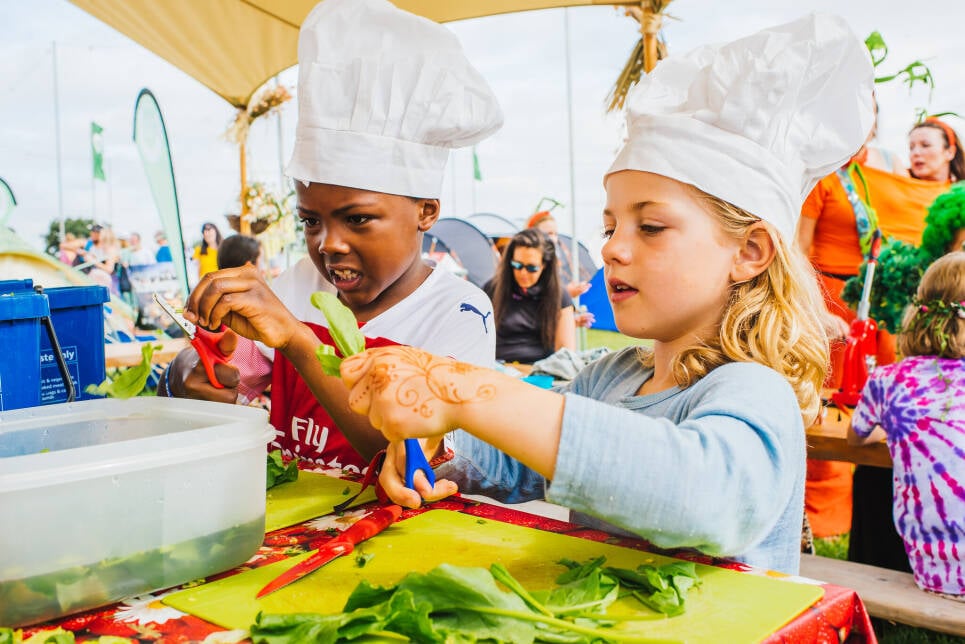
Tomorrowland, Belgium
The Tomorrowland dance event in Belgium is a kind of theme park for adults. After entering the gates, people feel transported to a dream world of dance, love & happiness. In 2017, before the vegan trend really took off, Tomorrowland was already experimenting with a purely plant-based range as part of their food line-up.
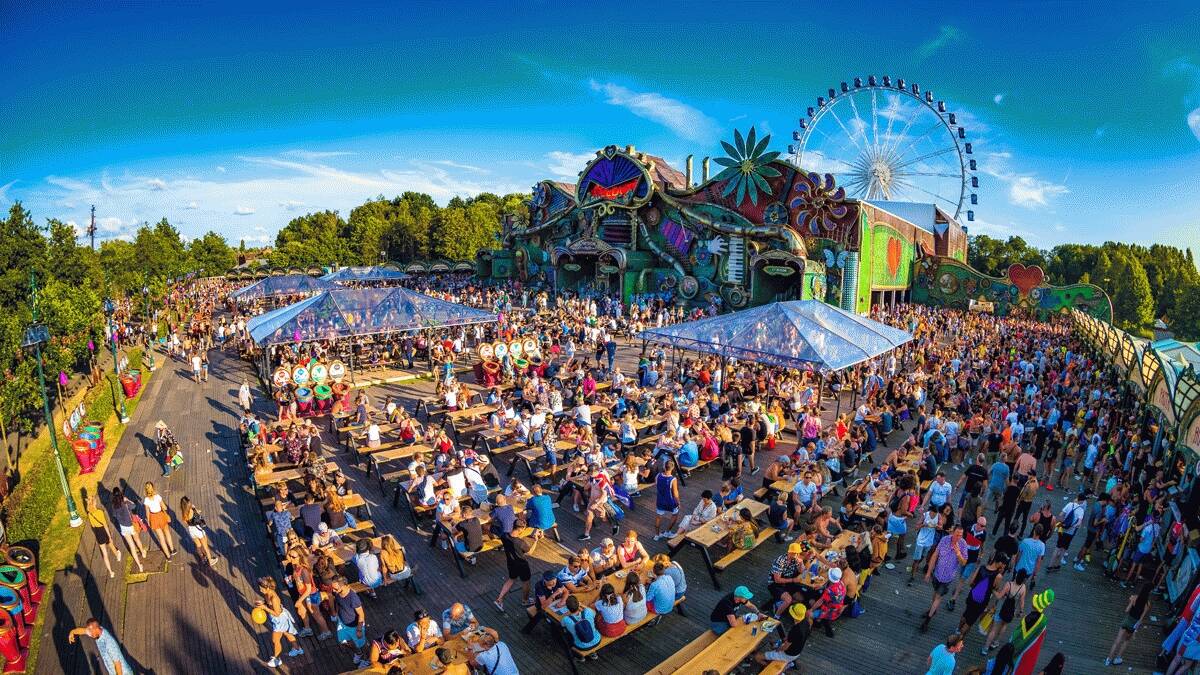
Envision, Costa Rica
The Envision festival in Costa Rica aims to become the most sustainable festival in the world. Water is available free of charge from faucets, and vegan food is the norm. At the Eco-hub, volunteers collect biodegradable waste, which is immediately sorted and processed. The DJs perform in booths made of living bamboo. As the organization puts it: we probably have the only festival stage in the world that is watered twice daily.
At the Dutch Lowlands festival there is plenty of focus on sustainable food and drink, but one initiative in particular is striking: Brasserie 2050. Here, the kitchen serves food for thought in a pop-up restaurant that can be completely disassembled and recycled. The menu boasts dishes of the future that will feed the ten billion people who will populate the planet in 2050. Take for example a hybrid steak tartare combining plant-based products with meat, or a hyper-local Niçoise salad.
Lowlands, the Netherlands
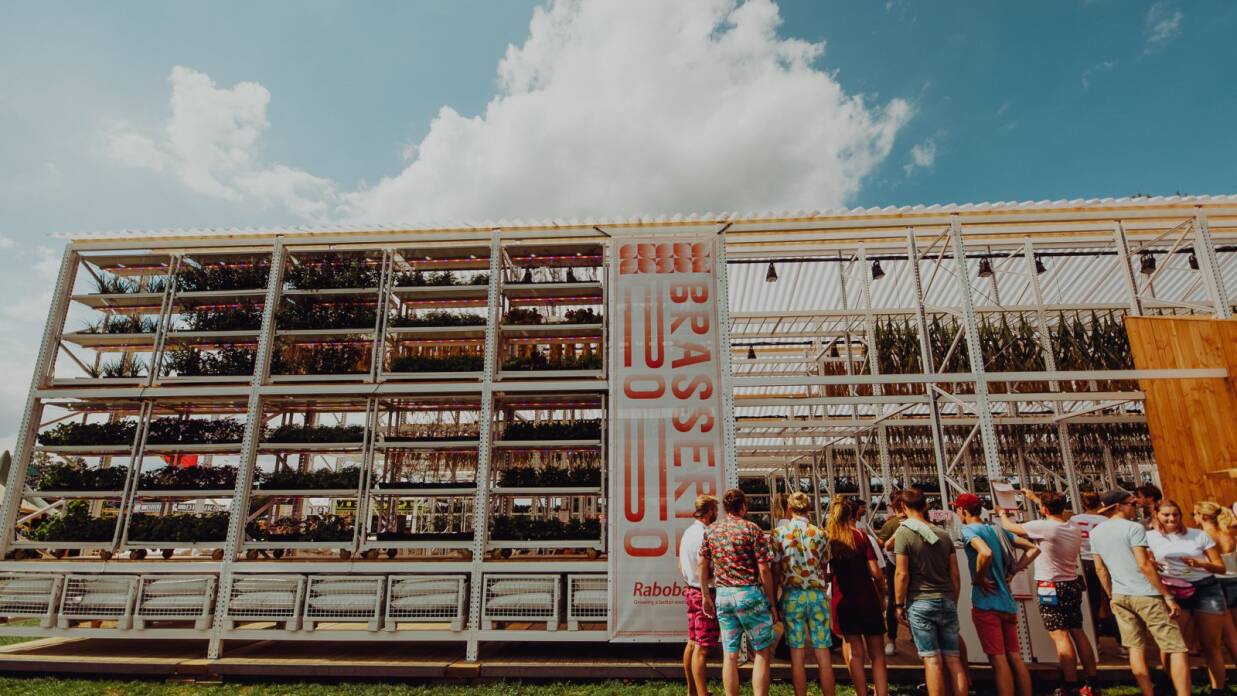
DGTL, worldwide
DGTL organizes festivals in multiple countries across several continents. Their mission: to organize festivals that are forward-thinking in terms of dance music, but at least as innovative when it comes to food, drink and waste management. The ways DGTL achieves this include the use of refundable hard cups, composting toilets, and by processing waste from local suppliers in the range of food available. Ultimately, DGTL isaiming to become a CO2- and waste-positive festival. In other words, a festival that leaves the world behind in better shape than when it started.
Joost Scholten Sander van der Meij
Festivals can create a lot of waste and there are never enough facilities. But that’s changed a lot in recent years. Some outdoor festivals are leading the way in circular innovation.
CIRCULAR FESTIVALS
Sustainable dancing
2 min








